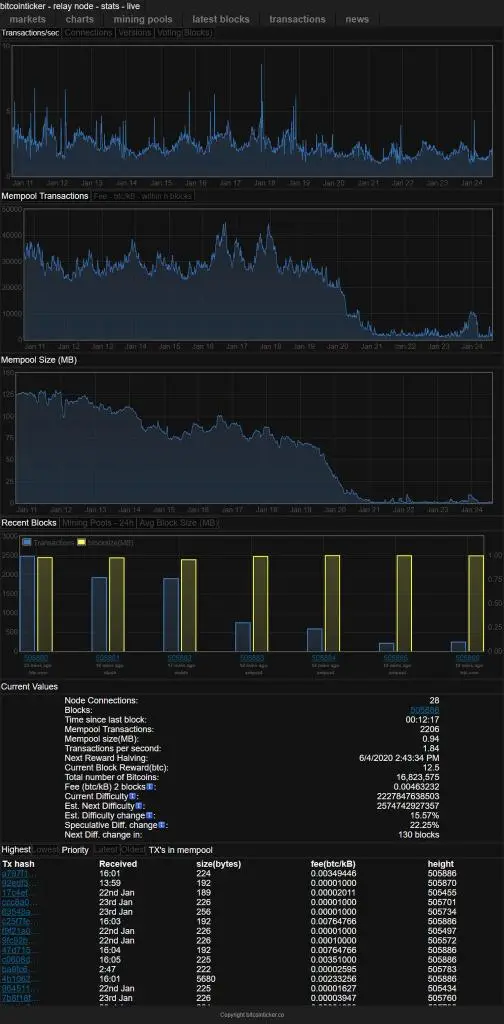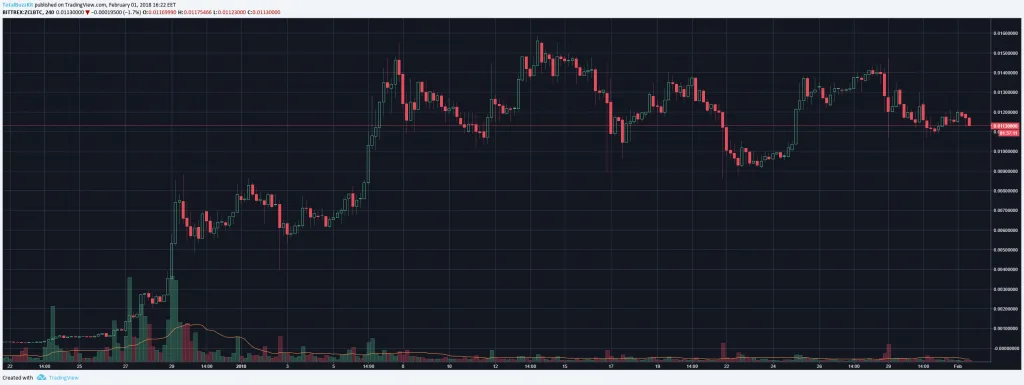It has become something of a tradition to start these monthly updates by saying something like ‘last month was unlike any other…’.
Well, folks — I thought long and hard before I started writing this but I am honestly unable to state things differently this time either. January 2018 was indeed extraordinary. Here is a summary of the things that shaped the month for me.
Empty Mempool
The great decline since the all-time high of 17 December 2017 continued into January and as I am writing this, mighty Bitcoin has fallen below $9,000 on all major exchanges. I personally think this is a good thing, as it stopped the insanity race of the last three months of the previous year.

A beautiful side effect was that the mempool cleared completely and it is once again possible to post transactions with as little as 5-10 sat/b fees and expect them to be picked up almost immediately. This hasn’t been the case since last summer!
A spike in the SegWit transaction count suggested that many people used this occasion to move their coins to SW-enabled wallets. Overall, great news for the ecosystem.
BitcoinTicker.co is a beautifully made tracker site that shows the state of the Bitcoin mempool and other useful blockchain stats (it is the source of the screenshot posted above).
The TradeBlock.com website has many useful real-time Bitcoin stats. I use and recommend both of these free services — check them out!
Still High Fees
This also exposed the horrible negligence of multiple wallets and particularly exchanges (Coinbase being the main culprit) that kept posting transactions with huge, unnecessary fees or simply sending bitcoins at a loss (if they cover fees at their end like GDAX).
TransactionFee.info is a useful website that analyzes the fee efficiency of your transactions. You can use this tool on both incoming and outgoing transaction to understand the (in)efficiency of the fee prediction algorithm of your wallet software and the exchanges you are using.
UTXO Consolidation Time!
Cheap fees means I was able to move some bitcoins around. I consolidated some smaller UTXOs, and sent small donations to several bitcoin-related services I’ve been using.
ZClassic Power
The news about the development of Bitcoin Private (a complete scam if you ask me) which boosted its price, combined with the historically low price of Bitcoin during last month meant I was able to mine nearly double the amount of bitcoins compared to December 2017.

As I write this, the Bitcoin Private dev team has announced a fork snapshot date for some time in the end of February. Once this happens, I am fairly confident the price of Zclassic (ZCL) will drop back to obscurity, and I will have to find another currency to mine.
Loving & Hating MiningPoolHub
And speaking about mining Zclassic, I spent a lot of time in January trying to figure out how MiningPoolHub works. For those who don’t know what it does, this is a mining pool service that supports a large number of coins (more than 30 at time of writing) and comes with some unique capabilities.
First, it supports mining a particular algorithm with auto-switching to the most profitable coin that uses it. This is possible for coins such as Zcash, Zclassic, Zencash and Bitcoin Gold which use the same algorithm (Equihash).
Second, it offers an ‘auto exchange’ feature which allows you to designate a target coin and convert anything you mine into it, then withdraw to your wallet. This makes it a direct (and somewhat better!) alternative to Nicehash, because it does the same and is less expensive. Exchange fee is only 0.2% and Bitcoin withdrawal fee is only 0.0001 Ƀ. This is 10× less expensive than withdrawing BTC from Cryptopia as I used to do before.
Auto Exchange Limitations
The downside is that with Auto Exchange enabled you can’t really time the market, and ZCL had some really wild swings last month, moving between 0.009 and 0.014 per BTC. But there is a workaround: you can keep Auto Exchange disabled and mine ZCL to your MiningPoolHub wallet instead. If the exchange price on Bittrex is OK for you, you can temporarily enable Auto Exchange and transfer your ZCL from the local wallet to the auto exchange wallet.
You must bear in mind that exchanges are not instant (there are delays between 30 minutes and several hours) so you can’t time peaks perfectly but still it works.
Why hating then? Well, the interface of MiningPoolHub is terrible and some features are quite broken. Occasionally, support for a given coin will break. The site owner will rush to fix things and leave an often cryptic message in broken English about the nature of the problem.
If you are using this service regularly, you should check your balances page at least once per day and follow @MiningPoolHub on Twitter with new post notifications enabled. You’ve been warned!
Monthly Yield for January
Because of all the ZCL magic, my total tally for last month was an astounding ~0.039 Ƀ, and that even excludes earnings from January 29 onward, because I haven’t yet exchanged these from ZCL to BTC.
his is a major gain in comparison to December 2017 (0.023 Ƀ) and November 2017 (0.025 Ƀ). However the results are not directly comparable because I added another Gigabyte GTX1070 to my rig in late December 2017. Still, this increased my overall hash rate by approx 20%, yet earnings jumped 70%.
How was January 2018 for you? Did you manage to score some profits, or were you obliterated by the Bitcoin value loss? Let me know in the comments below.

I am a small business owner from Bulgaria. I have been tinkering with personal computers ever since I was a kid. I feel enchanted by Bitcoin technology; last time I felt this excited was some 23 years ago when I first started surfing the internet using a 28.8k modem.
